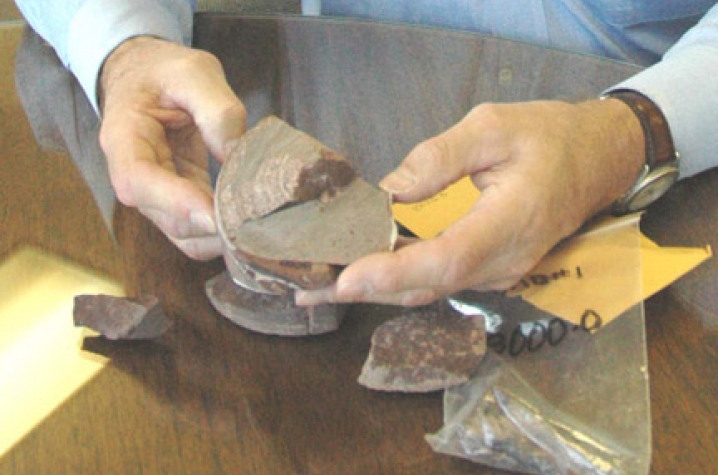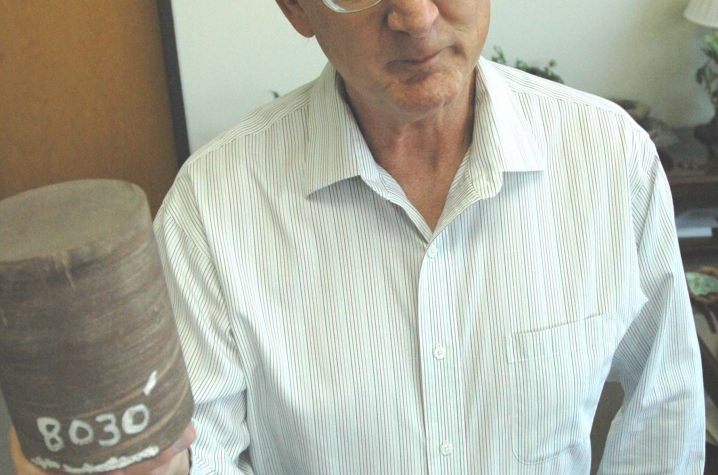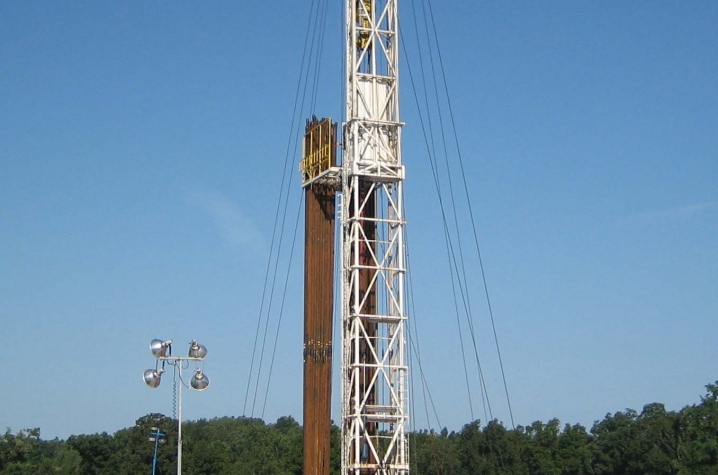Rocks Rarer Than Those From the Moon
LEXINGTON, Ky. (Sept. 1, 2009) -- The reddish-brown rocks on Jim Cobb's office table look a lot like other sandstone chunks, like ordinary stones you'd find anywhere.
They aren't.
"These are Precambrian rocks, fine-grain sandstone with iron staining. These are sedimentary rocks that are 1 billion to 1.2 billion years old," said Cobb, director of the Kentucky Geological Survey and the Kentucky state geologist.
The rocks were churned from a depth of 8,000 feet to 8,030 feet deep in Hancock County, where the KGS has drilled a well to test sequestration of condensed carbon dioxide. The test is determining the feasibility of permanently storing CO2 in the geologic strata several thousand feet below the water table and petroleum and natural gas deposits.
"These are the oldest rocks in the state of Kentucky," Cobb said with absolute confidence. No other well goes as deep into the Precambrian as the Hancock County test well.
"The later Precambrian era dates from 2.5 billion to 800 million years ago. To understand that, it helps to know that most coal measures are in the Pennsylvanian strata, and these are 324 million to 290 million years old," Cobb said.
KGS geologists collected the rocks in mid-June, when crews finished nearly two months of drilling the Hancock County test well.
Rick Bowersox, a KGS geologist who has overseen the Hancock County project, said a 30-foot core of the sandstone that was recovered from the well is currently being analyzed at a geologic laboratory in Houston, Texas.
That length of the core -- and the loose rocks being studied at the KGS's offices in the University of Kentucky's Mining and Minerals Building -- are rarer than the rocks collected by Apollo astronauts in the six moon landings from 1969 to 1972.
"They brought back 842 pounds of moon rocks. We have only about 460 pounds of Kentucky Precambrian rock from this core and maybe another 200 pounds of cores and cuttings from other wells in Kentucky," Bowersox said.
Although the Precambrian rock holds much fascination for the KGS geologists as artifacts from the past, it's the promise for the future that truly excites them.
The well is proving theories that CO2 collected from emissions from electricity-generating plants can be sequestered deep within the earth's core. Carbon dioxide is one of the greenhouse gases that many scientists say is contributing to global climate change.
The carbon dioxide -- essentially a food-grade gas-liquid mixture that is concentrated to about 0.4 percent of the space gaseous CO2 occupies -- is pumped so deep that the natural rock formations and pressures will hold it in place. Cobb said 1,100 pounds of pressure is needed to sequester the CO2; the actual pressure found at a depth of 8,000 feet -- nearly two miles deep -- is 5,000 pounds.
Funding for the project has been provided through a $1.5 million allocation from a grant by the Kentucky General Assembly in 2007, as well as a total of $6.5 million in grants from the Western Kentucky Carbon Storage Foundation, Illinois Office of Coal Development and Marketing, and the U.S. Department of Energy's National Energy Technology Laboratory. The Western Kentucky Carbon Storage Foundation was created by Peabody Energy, ConocoPhillips, E.ON U.S. and the Tennessee Valley Authority to provide funding and technical assistance to the project.
"This is one of the largest tests of its kind in the United States -- and the only one of its kind funded in part by a state legislature," Cobb said.








